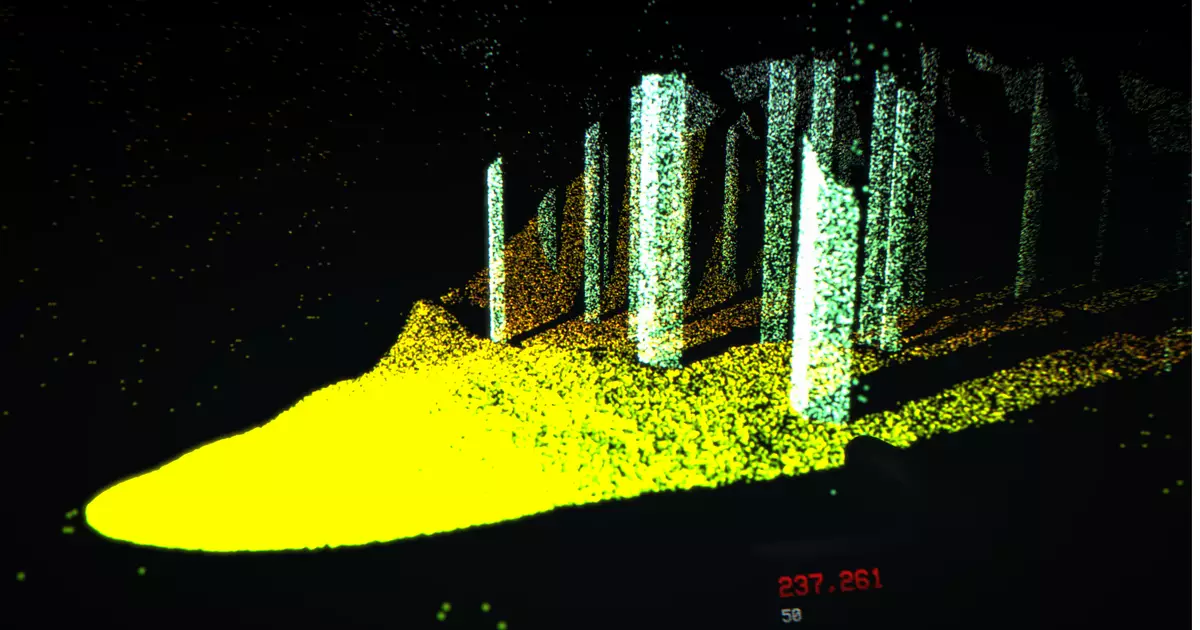In today’s gaming industry, where realism often eclipses creativity, KenForest’s “LiDAR Exploration Program” emerges as a breath of fresh air. This atmospheric horror game ingeniously wraps a scientifically inspired mechanic around an experience that is both calming and thrilling. LiDAR, short for “Light Detection and Ranging,” serves as not just a tool for distance measurement but also as a powerful artistic medium that is now being harnessed within virtual realms. By shooting laser beams to reveal landscapes, the game invites players into a meticulous world where both beauty and eeriness coexist.
Its concept is disarmingly simple: players hold a handheld LiDAR scanner to map out their surroundings, revealing both wonder and trepidation as they explore. It’s this very juxtaposition between the serene act of scanning the environment and the latent dangers lurking just beneath the surface that sets the tone for the experience. Unlike other games that might bombard players with jump scares and relentless tension, LiDAR Exploration offers a meditative engagement with the game’s world, making it accessible for various types of players.
The Calm Before the Unveiling
One of the most fascinating aspects of LiDAR Exploration is its pacing. The game encourages players to take their time, methodically unearthing the intricacies of the environment. As they scan, players can adjust the laser’s focus with the mouse wheel, a feature that invites a sense of control and deliberate exploration. Every stroke of the scanner serves as a reminder of the painstaking detail that goes into understanding a 3D environment. This is not just a hunt for items or objectives; it is an exercise in patience and observation, encouraging a deeper connection with the digital realm around them.
However, this tranquility is intriguingly punctuated by the inherent limitations of LiDAR technology. While players paint the virtual landscape into existence, they are continually confronted with the chilling fact that the objects they create are hollow and deceptive. The experience becomes a philosophical meditation on perception, honesty, and the reality of appearances. Each moment spent in the game fosters an underlying tension, suggesting that what seems serene could very well hide something sinister.
Artwork Through Science
Where LiDAR Exploration truly shines is in its capacity to meld scientific principles with artistic expression. The game transforms technical principles into visual poetry. The way light interacts with various surfaces creates a stunning visual experience that accentuates the natural beauty of the game world. Rather than merely following the mechanics of a horror narrative, players are invited to engage with the very essence of light itself—an element often underexplored in gaming.
In this context, the game becomes a canvas, a tool for players to experiment with light and shadow. Narrowing beams of light, players can dissect the complex interplay of illumination and darkness, illuminating the hidden nuances of the virtual forest or mysterious caves. Such engagement with the properties of light could inspire other developers to explore similar themes, producing work that transcends mere gameplay and touches on the aesthetic power of digital landscapes.
Subtle Chills and Unearthed Horrors
As players delve deeper into the game, a richer tapestry of horror emerges, albeit subtly. The scanner, while an instrument of exploration, acts as a harbinger of discovery, revealing that which should perhaps remain concealed. Shadows flicker and shift, and what initially appears tranquil may morph into something unsettling as players uncover hidden entities or otherworldly phenomena. These elements breathe life into the narrative, crafting an atmosphere that lingers long after the scanner’s light fades.
The comparison to more conventional horror experiences, such as a haunted house or survival horror, does not do justice to the unique brand of fear that LiDAR Exploration instills. It is not the visceral terror that traditional games deliver, but rather an intellectual and emotional haunting, challenging players to rethink their understanding of vision, space, and the universe’s mysteries.
A Glimpse into a Multi-faceted Future
As games increasingly embrace the art of storytelling and exploration, the LiDAR Exploration Program positions itself as a compelling example of innovative creativity. By utilizing technological concepts in a manner that encourages player reflection and artistic engagement, it transcends simple genre classifications. The game is something more than a horror experience; it’s an intricate interplay of science, art, and emotional depth, inviting players to reflect on the world around them—even in the eerie stillness of a haunted forest.

